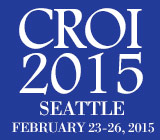 Harvoni (ledipasvir/sofosbuvir) yielded a 96 percent cure rate among people with genotype 1 of hepatitis C virus (HCV), as well as a small number of those with genotype 4--all of whom are coinfected with HIV. The Phase III, open-label ION-4 study of 12 weeks of Harvoni included 335 participants coinfected with HIV, including those with genotype 1a (75 percent), genotype 1b (23 percent) or genotype 4 (2 percent). Results were presented at the 2015 Conference on Retroviruses and Opportunistic Infections (CROI) in Seattle.
Harvoni (ledipasvir/sofosbuvir) yielded a 96 percent cure rate among people with genotype 1 of hepatitis C virus (HCV), as well as a small number of those with genotype 4--all of whom are coinfected with HIV. The Phase III, open-label ION-4 study of 12 weeks of Harvoni included 335 participants coinfected with HIV, including those with genotype 1a (75 percent), genotype 1b (23 percent) or genotype 4 (2 percent). Results were presented at the 2015 Conference on Retroviruses and Opportunistic Infections (CROI) in Seattle.
Fifty-five percent of the participants were treatment experienced; the remainder were treatment naive. Twenty percent of them had compensated cirrhosis.
All of the participants had a fully suppressed HIV viral load thanks to antiretroviral (ARV) therapy, and were taking one of three regimens. All of the regimens included Truvada (tenofovir/emtricitabine) along with: Sustiva (efavirenz), which comprise Atripla; Isentress (raltegravir); or Edurant (rilpivirine), which comprise Complera.
A total of 321 out of 335 participants achieved a sustained virologic response 12 weeks after completing therapy (SVR12, considered a cure). The cure rate did not differ significantly between treatment-naive and treatment-experienced people, between people with and without cirrhosis, or between ARV regimens.
The most common side effects of Harvoni were headache (25 percent), fatigue (21 percent) and diarrhea (11 percent).
Gilead intends to file a supplemental new drug application with the U.S. Food and Drug Administration (FDA) to include the ION-4 results in the Harvoni label.
To read a press release on the study, click here.
96% Hep C Cure Rate for Harvoni in Those Coinfected With HIV






Comments
Comments